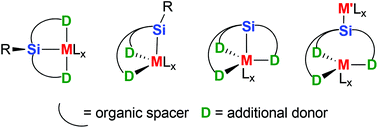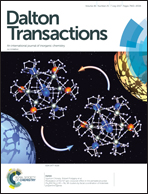Multidentate silyl ligands in transition metal chemistry
Abstract
Silyl ligands are of great interest in transition metal coordination chemistry since they exhibit a strong trans-influence and create electron rich metals centres, which are in turn eligible to activate reagents. This review presents and discusses the use of multidentate Si-based ligand systems in transition metal coordination chemistry. These include tri- and tetradentate pincer and scorpionate-type ligands, which have been developed in recent years in order to tailor both steric and electronic properties for achieving a defined control over the reactivity of a transition metal complex. A discussion of synthetic and structural aspects of several subgroups of ligand architectures is presented. Some compounds allow for a detailed insight into the activation process of silanes or are capable of activating small molecules.

- This article is part of the themed collections: Philip Power at 65: an icon of organometallic chemistry and 2017 Frontier and Perspective articles


 Please wait while we load your content...
Please wait while we load your content...